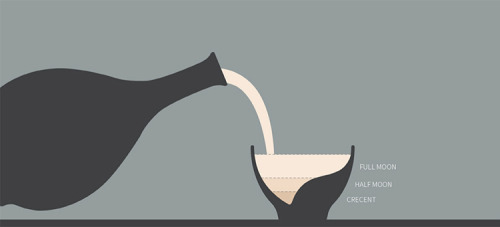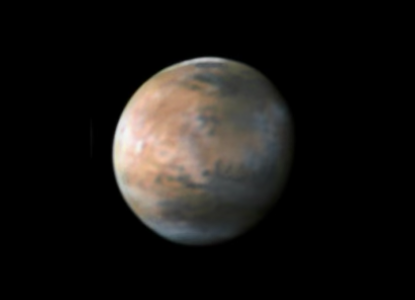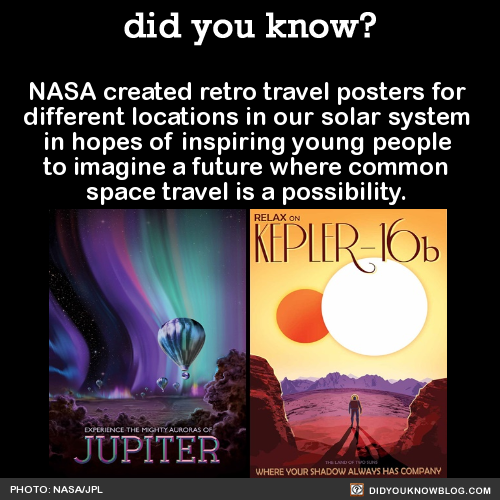The Ice House

The Ice House
Plan for habitation on Mars based on 3D-printed ice.
http://www.marsicehouse.com/
More Posts from Maevetheeuropan and Others
People can’t anticipate how much they’ll miss the natural world until they are deprived of it. I have read about submarine crewmen who haunt the sonar room, listening to whale songs and colonies of snapping shrimp. Submarine captains dispense “periscope liberty” - a chance to gaze at clouds and birds and coastlines - and remind themselves that the natural world still exists. I once met a man who told me that after landing in Christchurch, New Zealand, after a winter at the South Pole research station, he and his companions spent a couple of days just wandering around staring in awe at flowers and trees. At one point, one of them spotted a woman pushing a stroller. “A baby!” he shouted, and they all rushed across the street to see. The woman turned the stroller and ran. Nothing tops space as a barren, unnatural environment. Astronauts who had no prior interest in gardening spend hours tending experimental greenhouses. “They are our love,” said cosmonaut Vladislav Volkov of the tiny flax plants - with which they shared the confines of Salyut 1, the first Soviet space station. At least in orbit, you can look out the window and see the natural world below. On a Mars mission, once astronauts lose sight of Earth, they’ll be nothing to see outside the window. “You’ll be bathed in permanent sunlight, so you won’t even see any stars,” astronaut Andy Thomas explained to me. “All you’ll see is black.”
Mary Roach. Packing for Mars: The Curious Science of Life in the Void.
This is a really interesting read - it’s got a lot of information that I would never have thought to think of (such as - will astronauts eyeballs become different shapes without gravity - weird), but it also has really good chapters about the psychology of space.
(via psycholar)
this is wonderful - and def something I've thought about!
Shadow
The US’s GOES-16 weather satellite (still in its testing/non-operational phase) sent back this series of photos taken every 5 minutes today, showing the shadow of the moon marching across the continent. Video shared originally here:
https://twitter.com/UWSSEC/status/899707692364836866
http://www.ssec.wisc.edu
-JBB






Moon Glass: A Ceramic Cup That Showcases the Different Phases of the Moon the More You Drink From It
South Korean design studio Tale Co., Ltd. has created an ingenious ceramic liquor called the Moon Glass, which displays different phases of the moon as you drink from it. The adorable glasses are available to purchase on their website.
The Five W’s of an Expandable Habitat in Space
Who: In this case, it’s really a “what.” The Bigelow Expandable Activity Module (BEAM) is an expandable module developed by Bigelow Aerospace using a NASA patent conceptualized in the 1990s. It is made up of layers of fabric that will expand when installed and equalize with the pressure of the International Space Station.

What: Sensors inside BEAM will monitor temperature and radiation changes, as well as its resistance to potential orbital debris impacts. During its time on station, the airlock between BEAM and the rest of the space station will remained closed, and astronauts will enter only to collect data and help the experiment progress. If BEAM is punctured, the habitat is designed to slowly compress to keep the rest of the space station safe.
With the BEAM launch, deployment and time on station, Bigelow will demonstrate a number of expandable habitat capabilities, such as its folding and packing techniques, radiation protection capability and its thermal, structural and mechanical durability.

When: BEAM is set to launch on SpaceX’s eighth Dragon resupply mission April 8, and will be docked to the space station for a minimum two-year demonstration period.
Where: The International Space Station’s mechanical arm will transport BEAM from the spacecraft to a berthing port on the Tranquility module where it will then be expanded.

Why: These expandable modules take up less room on a rocket, but once set up, provide more volume for living and working in space.

When we’re traveling to Mars or beyond, astronauts need habitats that are both durable and easy to transport and to set up. That’s where expandable technology comes in. BEAM is one of the first steps to test expandable structures as a viable alternative to traditional space habitats.
Make sure to follow us on Tumblr for your regular dose of space: http://nasa.tumblr.com
Moral of the story:
Don’t fuck with the scientists and park rangers.
They largely consider themselves above politics.
The Republicans have awakened a sleeping giant.

Mars used to be much more Earth-like than we once thought. The Curiosity rover recently discovered high levels of manganese oxide, which can only exist in oxygen-rich environments. This means Mars used to have as much oxygen as Earth and plenty of water on its surface. Source Source 2
Solar System: Things to Know This Week
In addition to the Mercury transit of the sun today, there are a few other things you should know about our solar system this week:
1. Mars, Ready for its Close-Up

Mars will soon be closer to Earth than it has been for 11 years, presenting a great opportunity for backyard sky watchers.
2. Fire and Ice

Our spacecraft have an even closer view of Mars, and that fact regularly leads to some intriguing discoveries. The latest: volcanoes may have erupted beneath an ice sheet there billions of years ago. The above image is a mineral map of part of the Martian surface.
3. Icy Hydra

Meanwhile, our New Horizons spacecraft has sent home the first compositional data about Pluto’s four small moons. The new data show the surface of Hydra is dominated by nearly pristine water ice–confirming hints that scientists picked up in images showing Hydra’s highly reflective surface.
4. Ceres, Ever Sharper

The mission director for our Dawn mission writes, “Ceres, which only last year was hardly more than a fuzzy blob against the stars, is now a richly detailed world, and our portrait grows more elaborate every day.”
5. Join us at Jupiter

Our Juno mission arrives at the giant planet on Jul. 4. Meanwhile, all amateur astronomers are invited to take part in a worldwide effort to identify potential observations for the spacecraft to make once it’s in orbit. Find out how to join HERE.
Want to learn more? Read our full list of the 10 things to know this week about the solar system HERE.
Make sure to follow us on Tumblr for your regular dose of space: http://nasa.tumblr.com



Two very alarming changes have already been made on the White House website. Reason, empathy and progress must be fought for. I hope this isn’t indicative of upcoming policies but fear it obviously is.
Also I just edited this post to add my own screenshot: the White House’s website for combating antibiotic resistant bacteria is gone too.
I want to note that most of the great steps of social progress in American history were *not* made by presidents or politicians acting of their own accord. America thrives in a state of constant *peaceful* revolt. Protest, political dissent and civil disobedience are what change things.
Voting is great and we need more to do it, but the women’s suffrage movement didn’t get voted into victory. Republican President Nixon (Nixon!) didn’t create the Environmental Protection Agency because he had an environmentalist’s stance on the Earth.
It’s important to always remember that when people wield their concerns and press power to answer for itself, they change the world.
(Images courtesy of screenshots from a friend and from myself)

That’s tonight fyi
-
 maison-bulle-internationale reblogged this · 8 years ago
maison-bulle-internationale reblogged this · 8 years ago -
 maevetheeuropan reblogged this · 8 years ago
maevetheeuropan reblogged this · 8 years ago -
 maevemauvaise reblogged this · 8 years ago
maevemauvaise reblogged this · 8 years ago -
 maevemauvaise liked this · 8 years ago
maevemauvaise liked this · 8 years ago -
 thegamejustgotmorefierce reblogged this · 9 years ago
thegamejustgotmorefierce reblogged this · 9 years ago -
 yung-moduli liked this · 9 years ago
yung-moduli liked this · 9 years ago -
 go3dprinting reblogged this · 9 years ago
go3dprinting reblogged this · 9 years ago -
 go3dprinting liked this · 9 years ago
go3dprinting liked this · 9 years ago -
 trouchky reblogged this · 9 years ago
trouchky reblogged this · 9 years ago
